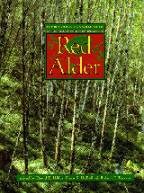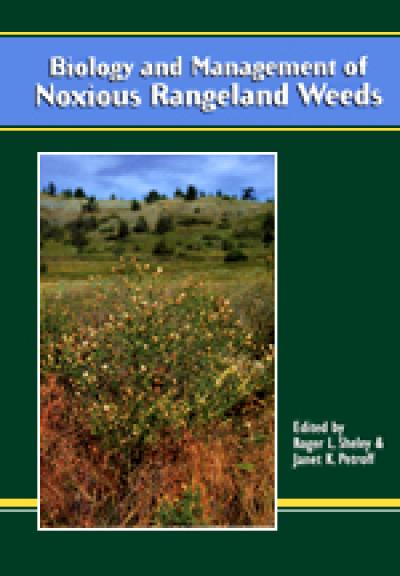
Biology and Management of Red Alder
Robert F. Tarrant, Dean S. DeBell, and David E. Hibbs
Only a few years ago, red alder, the major hardwood species in the Northwest, was regarded as a weed to be eradicated with herbicides. Today, red alder provides the raw material for a thriving industry, producing fine furniture, specialized veneers and plywoods, and paper products. In addition to its economic values, red alder has unique biological values that are proving vital in efforts to improve forest management.
This timely study presents a synthesis of current knowledge about the biology and managment of red alder. The first section covers topics in the basic biology of alder, while the second section offers principles and practices of alder management. The book's 34 contributors provide current and comprehensive information that will allow forest managers to weave red alder into the improved forest management systems demanded by an increasingly well-informed public.
About the author
Robert F. Tarrant was in the Department of Forest Science at Oregon State University.
Read more about this author
Read more about this author
David E. Hibbs is professor emeritus in the Department of Forest Ecosystems & Society at Oregon State University.
Read more about this author
Preface
Introduction
Red Alder and the Pacific Northwest
Robert F. Tarrant, David E. Hibbs, and Dean S. DeBell
SECTION 1: BIOLOGY OF ALDER
Biology of Red Alder (Alnus rubra Bong.)
Constance A. Harrington, John C. Zasada, and Eric A. Allen
Root Symbioses of Red Alder: Technological Opportunities for Enhanced Regeneration and Soil Improvement
Randy Molina, David Myrold, and C.Y. Li
Influences of Red Alder on Soils and Long-Term Ecoystem Productivity
B.T. Bormann, K. Cromack, Jr., and W.O. Russell III
Nitrogen Fixation by Red Alder: Biology, Rates, and Controls
Dan Binkley, Kermit Cromack, Jr., and Dwight D. Baker
Physiological Characteristics of Red Alder: Water Relations and Photosynthesis
L.J. Shainsky, B.J. Yoder, T.B. Harrington, and S.S. N. Chan
Genetics of Red Alder and Its Implications for Future Management
Alan A. Ager and Reinhard. F. Stettler
Stand Development and Successional Implications: Pure and Mixed Stands
Michael Newton and Elizabeth C. Cole
Growth Patterns of Red Alder
Dean S. DeBell and Peter A. Giordano
Red Alder: Interactions with Wildlife
William C. McComb
Evaluation of Site Quality for Red Alder
Constance A. Harrington and Paul J. Courtin
Biology, Ecology, and Utilization of Red Alder Seed
Alan Ager, Yasuomi Tanaka, and Jim McGrath
Seedling Quality and Nursery Practices for Red Alder
Glenn R. Ahrens
Red Alder Plantation Establishment
Alexander Dobkowski, Paul F. Figueroa, and Yasuomi Tanaka
Management of Young Red Alder
David E. Hibbs and Dean S. DeBell
Fertilization and Nutrition of Red Alder
M.A. Radwan and D.S. DeBell
Growth and Yield of Red Alder
Klaus J. Puettmann
Wood Quality, Product Yield, and Economic Potential
Marlin E. Plank and Susan Willits
Conclusion
Whose Fat Shadow Nourisheth
David E. Hibbs, Dean S. Debell, and Robert F. Tarrant
List of Contributors
Index
Alder(Alnus spp.) has long been observed to possess unique biological properties. Virgil (70-19 B.C.), author of the Aeneid, reported his observations on the ecology of alder, making particular reference to its occurrence in moist places (Kellogg 1882). In Forest Trees of Britain, Johns (1849) wrote, "It has been observed that their [alders'] shade is much less injurious to vegetation than that of other trees," and quoted Browne's jingle, above.
The first "modern" scientist to report on nodulated alder roots was Meyen (1829). Following this clue, Hiltner (1896) performed a classic study in which seeded black alder (Alnus glutinosa Gaertn.) grew vigorously in sterile, nitrogen-free soil inoculated with alder root materials while similar plants in uninoculated soil remained small and nitrogen-deficient. Other scientists then became interested and developed sufficient information to include alder in a list of "nitrogen-gathering" plants published in the Yearbook of the United States Department of Agriculture 1910 (Kellerman 1911).
This early research was done with species of alder other than red alder (Alnus rubra Bong.), the major deciduous (hardwood) forest tree of the Pacific Coast of the United States and Canada. During the latter half of the twentieth century, however, great advances have been made in understanding the biology, and management, and utilization of red alder (Treppe et al. 1968; Briggs et al. 1978), and there now are hundreds of published research findings. (Heebner and Bergener 1982). Much of this information describes the significant role of red alder in ecosystem function, including documentation that the actinomycete endophyte (Frankia spp.) is responsible for nitrogen fixation in nodules on alder roots (Berry and Torrey 1979).
Only a few years ago, red alder was regarded by most Pacific Northwest forest managers as a weed to be eradicated with herbicides. Today, red alder provides the raw material for a thriving industry, producing fine furniture, cabinetry, specialized veneers and plywoods, shipping pallets, and paper products. Present markets for these products are limited primarily by the supply of alder logs.
Western Oregon has more than nine billion board feet (Scribner rule) of red alder sawtimber, almost two-thirds of which is in non-federal ownership as trees of 12 to 16 inches diameter; slightly more than one-third is in trees 18 inches or larger (Gedney 1990). In the state of Washington, the alder resource is even greater (Beachy and McMahon 1987), but there is very little young alder in either state because of "weed-control" programs of the past several decades. The scarcity of young alder is now a cause of concern to an industry that continues to grow.
A hardwood policy report being prepared by T. Raettig, G. Ahrens, and K. Connoughton (pers. com.) provides a good overview of the current role of the alder industry in the regional and global economy. In 1991, the harvest of hardwoods in Oregon and Washington was 635 million board feet. In Oregon, 76% of the hardwood harvest was red alder; the percentage in Washington is not but probably is similar or higher. 88% of this harvest came from private lands. The 1991 hardwood harvest level has risen 28% since 1987; during the same period, the softwood harvest decreased 31%.
Domestic markets for alder are diverse. In 1990, for example, 60% of the alder lumber produced in Washington was used in the manufacture of cabinets and furniture, both being products whose finished value is much higher than the value of raw materials they contain (high value-added products). In 1988, hardwood chips were produced from 8.6 million board feet of roundwood and 196,000 tones of mill residue. The market for both interior ply and face veneer has grown rapidly as softwood sources have declined, but no figures are available on the size of this industry which competes with both the chip and sawlog markets.
From 1982 to 1992, alder exports to Asia and Europe have grown from almost nil to over 65 million board feet. In 1991, alder accounted for 10% by volume of all U.S. hardwood lumber exports to Europe and Asia. These exports accounted for 15% of the total hardwood lumber volume produced int he Pacific Northwest. Including chips, the 1990 value of hardwood exports for Oregon and Washington was $91 million.
The hardwood industry in Oregon and Washington employed 5600 people in 1990 and paid wages of over 150 million, an increase over previous years. Nationwide, alder provided production-line jobs to 23,500 people in secondary manufacturing industries. The Pacific Northwest alder industry is dynamic and important. It has become global and continues to grow, providing an element of stability in the general forest industry.
But what about the bottom line: Does alder have the economic value of softwoods? Recent research concludes that although volume recovery from alder logs is less than that from softwoods, alder lumber value increases dramatically as log diameter increases. Alder log values compare favorably with those for Douglas-fir on a net scale basis (Plank et al. 1990). There have been a number of formal and informal economic comparisons of growing alder and Douglas-fir (e.g., Tarrant et al. 1983). Some analyses show Douglas-fir to be a superior investment; others reach the opposite conclusion. Almost all, however, find little difference between the two options, in spite of the different assumptions of value and growth that each makes.
The market performance of red alder is also impressive (Western Hardwood Association 1992). Since 1980, alder prices have increased steadily, in contrast to fluctuating softwood prices. Alder logs are priced in the range of $300 to $350 per million board feet delivered to the mill. Select-and-Better grade alder lumber (4/4 kiln-dried) commands a price of $1000 per million board feet in a market that has expanded to Pacific Rim and European countries. as a bonus, the domestic economy benefits because the hardwood industry is labor intensive, requiring ten times more jobs per unit of raw material than the softwood industry.
For many additional reasons, interest in managing and utilizing red alder is at an all-time high. One very basic reason is that 40 years of research by scientists in universities, public agencies, and private industry has paid off. In a rare instance in the history of forestry, biological information is available, in advance of management, as the basis for growing a biologically and economically valuable tree species in short-rotation systems.
Another reason is the change in how the world's forests are to be managed. These biological systems have been greatly altered by intensive harvesting under yesterday's technology. Like the people of central Europe (Plochman 1989), the U.S. public, especially in the Pacific Northwest, seriously questions current forest management practice and calls for new, better approaches to sustaining ecosystems.
The high incidence of laminated root rot in the Douglas-fir region offers another reason for interest. Douglas-fir growth is reduced by the fungus, and trees are eventually killed. Conifer tree species show varied levels of resistance to the disease, but all hardwoods are immune. On appropriate sites, red alder is the species of choice in reforesting lands infected with laminated root rot.
The motivating interest of small private forest land owners is often the shorter time to grow and harvest a crop of alder than is generally found with conifers. Most forest landowners are over 50 years old. Thus, a short 30-year alder rotation is often much more appealing than a 60- to 70 year Douglas-fir rotation.
Finally, red alder enjoys a significant political and scientific support in the Pacific Coast states. In 1987, the Oregon State Legislature created the Hardwood Forest Products Resources Committee to assess the future of the industry and work toward its best interests. In 1991, the Oregon Legislature directed that this committee present to the 1993 Legislative Assembly an operational plan for converting the committee to commodity commission status. In 1989, the Washington State Legislature authorized development of the Washington Hardwoods Commission. In full function now, this commission is supported by a small levy on hardwood processors to help support and expand their industry. In California, interest also is developing in forming a hardwood commission. The California Timber Industry Revitalization Committee and the Hardwood Foundation have joined forces to support hardwoods as an important resource in modern forest management.
The Western hardwood Association, since 1955 a champion of hardwood resources, plays a strong role in all these developments. Along with providing a forum for hardwood interests, the Association disseminates technical information through an array of publications and sponsors technical meetings to advance knowledge in the field.
Red alder research is being strengthened. At Oregon State University, the Hardwood Research Cooperative coordinates and conducts research programs according to user needs. The USDA Forest Service, Pacific Northwest Forest Research Station provides excellent information on alder supply, management, and utilization. in western Washington, Weyerhaeuser Corporation has installed extensive field studies of regeneration and growth of alder. All this activity helps ensure that alder and associated hardwood forest tree species can continue to contribute their economic and biological values to sound forest management systems.




